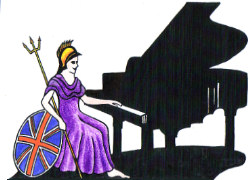Learn to Play the Piano Make Music
Pianist, Singer, Piano Teacher, Piano Lessons, Fulham, London

UK Piano Page


Phil believes that you are as musically talented as you are fascinated and excited by music and that his job as a music teacher is to help you learn and practise effectively at your own pace, without pressure, removing any blocks that you may encounter along the way. To do this, Phil will provide you with the following 7 things:
Phil teaches at home in his small, very well-equipped recording studio, which has stunning sound, two excellent digital pianos and a very powerful silent Digital Audio Workstation running Cubase, Pianoteq and Finale and a host of other music software. He currently teaches adults only, as his musical fluency course materials have not been designed for children. This may change in the future and he is always willing to discuss the possibility of teaching younger pupils in exceptional cases.
His fees are £50 for an hour’s session.
Qualification: BmusRNCM (Hons)
Qualification: BmusRNCM (Hons)
Hampstead, London
England
Experienced piano teacher and accompanist
Great Harwood, Lancashire
England
I teach piano & violin from my own home in Great
Music Festival for performers and guests Our 10th
18-06-2022 12:30PM
The Morecambe Bay Piano Group was set up to extend
11-12-2021 01:00PM
The Morecambe Bay Piano Group was set up to extend
08-01-2022 01:00PM
The Morecambe Bay Piano Group was set up to extend
12-02-2022 01:00PM